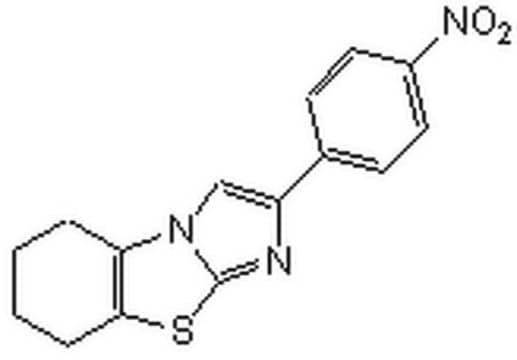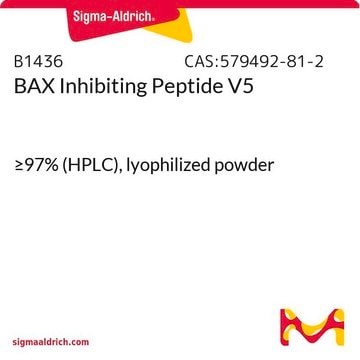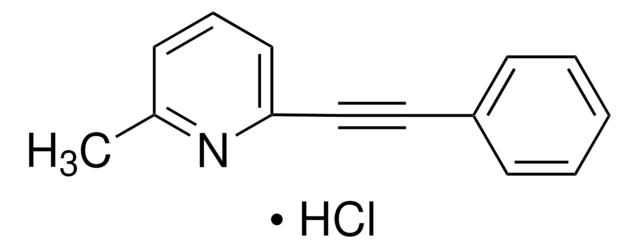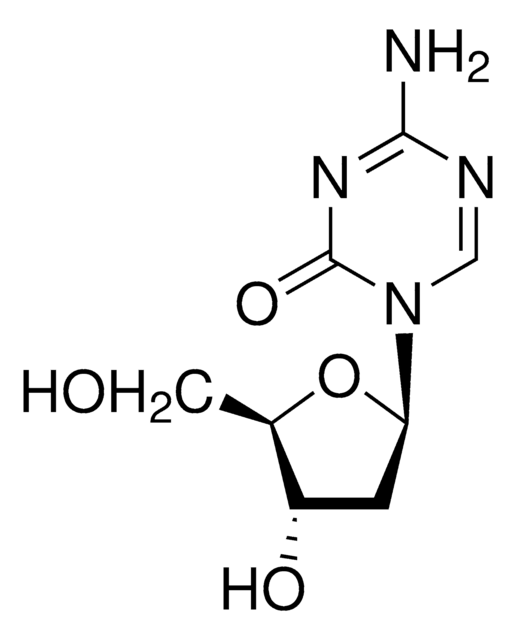P4359
Pifithrin-α
≥95% (HPLC), powder
Sinónimos:
2-(2-Imino-4,5,6,7-tetrahydrobenzothiazol-3-yl)-1-p-tolylethanone hydrobromide, PFT-α
About This Item
Productos recomendados
assay
≥95% (HPLC)
form
powder
storage condition
protect from light
color
off-white
mp
192.1-192.5 °C (lit.)
solubility
DMSO: 20 mg/mL
shipped in
wet ice
storage temp.
−20°C
SMILES string
Br[H].Cc1ccc(cc1)C(=O)CN2C(=N)SC3=C2CCCC3
InChI
1S/C16H18N2OS.BrH/c1-11-6-8-12(9-7-11)14(19)10-18-13-4-2-3-5-15(13)20-16(18)17;/h6-9,17H,2-5,10H2,1H3;1H
InChI key
HAGVCKULCLQGRF-UHFFFAOYSA-N
Application
- to study the effect of specific p53 inhibitor on p53-upregulated modulator of apoptosis (PUMA) expression after transient global cerebral ischemia (tGCI)
- as p53 inhibitor to treat PA1 cells
- as a tumor protein p53 (TRP53) inhibitor, to treat mouse lung epithelial-12 (MLE-12) cells
Biochem/physiol Actions
Features and Benefits
Storage Class
11 - Combustible Solids
wgk_germany
WGK 3
flash_point_f
Not applicable
flash_point_c
Not applicable
ppe
Eyeshields, Gloves, type N95 (US)
Certificados de análisis (COA)
Busque Certificados de análisis (COA) introduciendo el número de lote del producto. Los números de lote se encuentran en la etiqueta del producto después de las palabras «Lot» o «Batch»
¿Ya tiene este producto?
Encuentre la documentación para los productos que ha comprado recientemente en la Biblioteca de documentos.
Los clientes también vieron
Artículos
Apoptosis regulation involves multiple pathways and molecules for cellular homeostasis.
Cell cycle phases (G1, S, G2, M) regulate cell growth, DNA replication, and division in proliferating cells.
Nuestro equipo de científicos tiene experiencia en todas las áreas de investigación: Ciencias de la vida, Ciencia de los materiales, Síntesis química, Cromatografía, Analítica y muchas otras.
Póngase en contacto con el Servicio técnico















